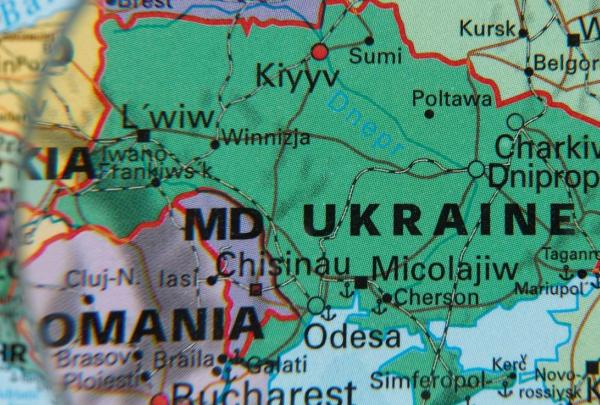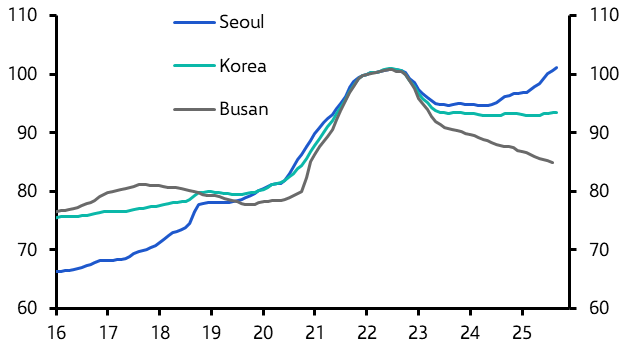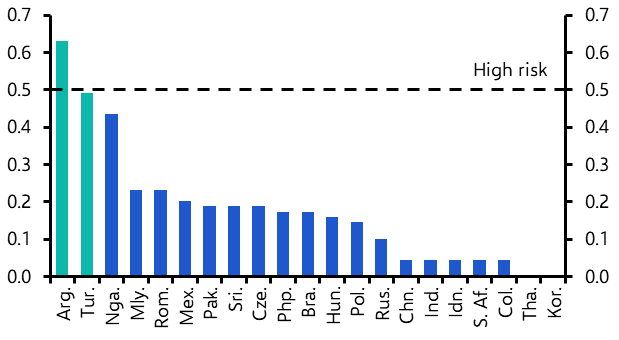The economic and market dislocation caused by the COVID-19 outbreak has raised more questions than economists and market participants have answers. To quote Jay Powell, much about the future remains “unknowable”. Nonetheless, there are some things that we can say with more certainty than others and where questions remain we can at least offer a framework for thinking. Here are the most frequent questions we’ve received from clients over the past week or so, with links to key pieces in each case.
- How big will the initial hit to economic output be? Despite the unusual amount of uncertainty at present, the one thing we can be reasonably sure about is that the hit to economic activity over the coming months will be huge. On the basis that widespread shutdowns remain in place for 10-12 weeks (as governments have suggested is possible), we think most economies will suffer falls in GDP of between 10-20% q/q in the first or second quarter of this year (with the hit coming earlier in Asia and later in Europe and the US). School closures alone appear to knock around 2% off GDP each quarter. It’s impossible to know exactly what is priced into markets, but the dislocation over the past week suggests that most investors are now bracing for significant falls in output. In contrast, most economists still have their heads in the sand. A survey last week suggested that only one-third of economists expected global GDP growth to slow by more than 1.5%-pts this year. We’ve marked our forecast for global GDP in 2020 down from +2.9% y/y to -1.0% y/y. That would eclipse the fall in output in 2009 (-0.5% yy) and be the worst year for the global economy since the 1940s.
- What will the recovery look like? Activity should rebound once restrictions are lifted. But the lessons from China suggest that this may be uneven, with production rebounding first and consumer spending being slower to recover. As for the alphabet soup of what shape the recovery will take (V, U, W, L?), the truth is that we simply don’t know at this stage. Our working assumption is that most economies will return to their pre-crisis path of GDP within a couple of years, albeit with some permanent lost output in the meantime. But such an outcome will require several things to go right - it requires governments to stand behind otherwise solvent firms and the banks, consumers and businesses to recover their “animal spirits” and bond markets to tolerate the higher debt burdens that will inevitably result from the crisis. If any of these conditions do not hold - or if the virus or something like it returns - then it’s likely that economies will settle on a lower path of GDP. The risks are greatest in highly-indebted countries in the euro-zone and EMs with fragile balance sheets.
- How likely is this to morph into a full-blown financial and banking crisis? Most banks are in much better shape than was the case in 2008, but vulnerabilities still exist, particularly in Europe and China. Risks also exist in the corporate debt market, although should these crystalise they would be more likely to cause losses for bond holders rather than banks. For now, our forecasts assume that governments stand behind the banking system and that widespread defaults and banking failures are avoided. But if problems do emerge over the coming weeks, these are the places to watch.
- What more can policymakers do? Policymakers still have more work to do and - despite mounting concerns in some quarters - are not yet out of ammunition. But a targeted approach is needed. Monetary policy is now operating at its limits of what it can do in terms of stimulating demand. Instead, the main role for central banks is now to prevent the financial system from freezing completely - either with targeted measures focussed on specific pockets of illiquidity or by flooding the system with commercial bank reserves to combat more systemic liquidity problems (i.e. QE). In contrast, fiscal policy will have to shoulder the burden of supporting demand. (More on the fiscal costs later.) And while this is likely to be debt financed in the first instance, governments may increasingly turn to central bank financing or “helicopter drops” if the disruption persists. In the past, this has raised all sorts of concerns about blurring the lines between fiscal and monetary policy. But in a world where demand is collapsing such concerns would be quickly pushed to one side. We’ll have more to say about this in a forthcoming note.
- How big will the fiscal costs be? It’s difficult to say at this stage, but the fiscal costs could be as large as 10-15% of GDP. There are two pillars to the fiscal packages introduced by most governments: measures to support demand (cash payments to households, tax breaks for employers and so on) and loans and guarantees to businesses. The situation is evolving quickly, with new measures announced on a daily and weekly basis. At first sight, the numbers attached to the first pillar will be smaller than those attached to the second. The key point, however, is that many of the costs attached to the latter may either never be recouped (in the case of loans) or never realised (in the case of guarantees). Indeed, in practice the true costs will depend on the extent to which loans and guarantees are fully realised and to which more drastic action - for example forced nationalisations of systemically important businesses - is required. That said, even if these end up quite small, government deficits are likely to rise significantly due to the other discretionary fiscal measures, as well as the automatic stabilisers that will kick in as economic growth slows.
- Will the economic shock be inflationary or deflationary? The disruption has affected both the supply- and the demand-side of the economy. In theory, the former is inflationary (since the ability to supply goods and services is constrained) while the latter is deflationary (since demand for goods and services is diminished). The aggregate effect on inflation should therefore depend on how these two forces balance out. In practice, our view is that deflation poses a much greater risk than inflation in the short term. And with nominal interest rates already at the effective lower bound, an associated rise in real interest rates would intensify the headwinds facing consumers and businesses.
- When will markets find a floor? Markets have bounced a few times after major announcements of policy support in the past few weeks, but on each occasion so far the relief has proved fleeting. We think that monetary and fiscal support are necessary, but not sufficient, conditions for a sustained turnaround in markets. That is because economic policy can do little to offset the near-term damage caused by shutting down large parts of the economy – its main function is to stop that hit from turning into a longer depression. A lasting recovery in markets is unlikely until we also see clear evidence that the global spread of coronavirus is slowing, allowing lockdowns to end.
- What will the long-term effects of the virus be? If the short-term effects of the virus are uncertain, then the long-term effects are unknowable. However, beyond the general shape of the recovery (see Question 2 earlier), there are a couple of ways in which the crisis could have longer-term implications. One is that the hit to both confidence and balance sheets may plausibly result in a tendency towards higher saving by consumers and reduced investment by businesses. Animal spirits may be subdued for years to come. Another is that the fiscal costs of the crisis force governments into a new round of austerity measures once the immediate crisis fades. (This isn’t in our central scenario but is a significant risk in the euro-zone.) On the supply-side, it’s possible that the virus adds to the reasons to think that globalisation has peaked. In the short-term, it’s likely that international travel restrictions will remain in place for some time after domestic containment measures are lifted. Beyond this, the widespread disruption caused by the virus may be another factor pushing firms to reconsider the wisdom of maintaining long and complicated supply chains. Whatever happens, the economic effects of the coronavirus outbreak are likely to be felt for some time after the acute phase of the crisis fades.




